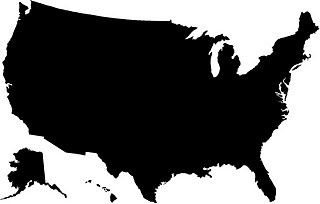Illinois Launches Study for 220 mph Passenger rail Service
State gives $1.25 million to U. of I. to examine options for Bullet Trains
June 02, 2011|By Jon Hilkevitch, Tribune Reporter
The University of Illinois will lead a study examining the options to build tracks exclusively for 220 mph bullet trains operating initially between Chicago and Urbana-Champaign and eventually carrying passengers the length of the state in about two hours.
Gov. Pat Quinn announced the $1.25 million state-funded study Thursday at a meeting in Chicago of the U.S. High Speed Rail Association, whose leaders have questioned the benefits of the federal government and numerous states, including Illinois, investing in train service that tops out at 110 mph.
Quinn acknowledged that building a 220 mph network will be costly and likely take up to 50 years. He compared the rail project with the construction of the nation's interstate highway system, which kicked off in 1956. Still, Quinn, 62, said he expected to see the first bullet trains operating during his lifetime, joking that he planned to live to 102.
"The way to prosper is to have a big vision,'' Quinn told the rail conference, adding that building a 220 mph passenger rail network will "make Champaign a suburb of Chicago. … We cannot miss the boat here, or miss the train," he said.
But the obstacles to creating bullet train service are formidable.
Construction would cost tens of billions of dollars, according studies conducted for the Midwest High Speed Rail Association. The project also would require the state and private investment partners to acquire huge amounts of land, including by using eminent-domain laws, to build dedicated tracks for 220 mph service that involve no railroad crossings or interference from slower-moving freight and commuter trains.
In addition, the debut of bullet train service could happen only after an exhaustive environmental review, and likely, costly litigation between the state and landowners and other opponents of the project.
The governor said he envisioned the bullet train route would extend from O'Hare International Airport to downtown Chicago, McCormick Place, then on through the far south suburbs to near Peotone, which the state has selected as the site of the Chicago region's next major airport, and continue on to Kankakee en route to Urbana-Champaign.
From Urbana-Champaign, home to the U. of I.'s main campus, the route would extend to either St. Louis, Indianapolis, or both, Quinn said.
The goals of the feasibility study include identifying possible routes, estimating construction and operating costs, and evaluating potential ridership, said state Transportation Secretary Gary Hannig.
The study, led by U. of I. railroad engineering professor Christopher Barkan with help from Steve Schlickman, director of the Urban Transportation Center at the U. of I. at Chicago, is expected to be completed in late 2012, officials said.
The $1.25 million study, which will be paid for using funds in the state's capital improvement program, is being launched after efforts by the state to receive an $8 million federal grant to pay for the bullet train feasibility study were rejected last year by the Federal Railroad Administration, which instead awarded funds to other projects.
Quinn's new study on bullet trains is partially aimed at quelling criticism that Illinois' passenger rail focus so far — a multibillion-dollar project to increase the top speed of Amtrak trains from 79 mph currently to 110 mph on the Chicago-to-St. Louis route — amounts to relatively minor improvements in travel time.
Which Direction
Should High Speed
Rail Go?
While we certainly applaud the IL Governor for his support for high speed rail across Illinois, we maintain that perhaps this is not the direction high speed rail (hsr) should go. Also, we would like to get on a bullet train, and we can't get on another study. Piecemeal projects may never generate significant ridership, and only serve those opposed to offering transportion options. Why not focus instead on a route with millions of potential riders by connecting regions with major cities enroute, and links with another high speed rail line in development such as the Northeast Corridor? Chicago and New York are major rail hubs for Amtrak/commuter rail, and offer connecting routes to local destinations as well. All one needs to do is look at existing airline routes in order to ascertain what would work, and what won't. One has to ask, will some of these routes talked about ever merit more than one two trains a day? Also, it should be noted that the distrance in travel across Illinois (n/s) is only slighly less than going from Chicago to New York. CP



